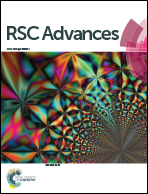Structural evolution of TiAl during rapid solidification processing revealed by molecular dynamics simulations
Abstract
In this paper, the processes of rapid solidification in TiAl was investigated by molecular dynamics simulations. The structure transformation which occurs during solidification is described by internal energy, radial distribution functions, Honeycutt-Anderson pair analysis technique, mean square displacement and simulation of powder X-ray diffraction patterns. The effects of different cooling rates, 50–0.005 K ps−1, on the amorphous structure formation and crystallization of liquid TiAl are simulated. The results show that an amorphous phase can be obtained when the cooling rate is not less than 0.02 K ps−1, and γ-TiAl + α2-Ti3Al mixed phases can be formed when the cooling rate is 0.01 K ps−1.


 Please wait while we load your content...
Please wait while we load your content...